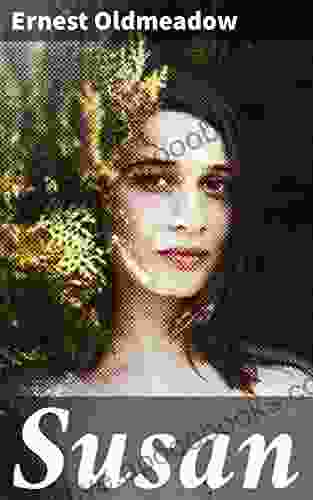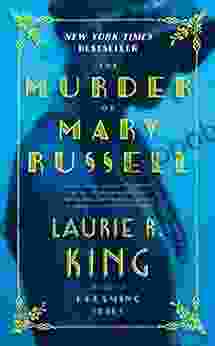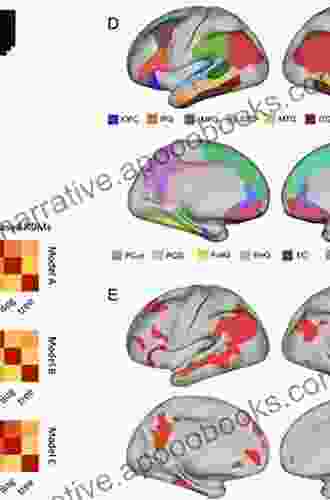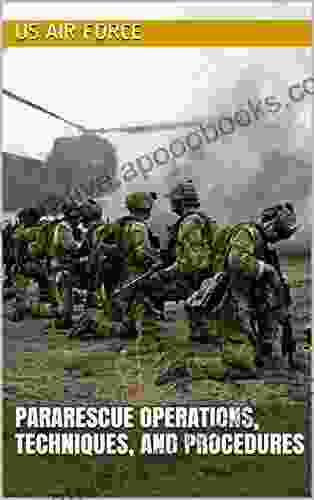Cognitive and Neural Modelling for Visual Information Representation and Processing

Visual information is one of the most important sources of information for humans. We use our vision to navigate the world around us, to recognize objects and people, and to understand the actions of others. In recent years, there has been a growing interest in developing computational models that can simulate the human visual system. These models can be used to better understand the human brain, to develop new image processing algorithms, and to create more realistic virtual environments.
This book provides a comprehensive overview of the latest developments in cognitive and neural modelling for visual information representation and processing. It covers a wide range of topics, including:
4 out of 5
| Language | : | English |
| File size | : | 15382 KB |
| Text-to-Speech | : | Enabled |
| Screen Reader | : | Supported |
| Enhanced typesetting | : | Enabled |
| Print length | : | 350 pages |
- Image segmentation
- Object recognition
- Scene understanding
- Visual attention
The book is written by leading researchers in the field and provides a valuable resource for students, researchers, and practitioners. It is an essential read for anyone interested in understanding the human visual system or in developing computational models for visual information processing.
Image Segmentation
Image segmentation is the process of dividing an image into different regions, each of which represents a different object or part of an object. This is a fundamental step in many computer vision tasks, such as object recognition and scene understanding. There are a variety of different image segmentation algorithms, each with its own strengths and weaknesses.
One of the most popular image segmentation algorithms is the watershed algorithm. This algorithm works by identifying the "catchment basins" of different objects in the image. The catchment basin of an object is the set of all pixels that would flow into the object if the image were flooded with water. The watershed algorithm can be used to segment objects that are touching or overlapping, which makes it a good choice for segmenting complex images.
Another popular image segmentation algorithm is the mean shift algorithm. This algorithm works by iteratively shifting each pixel in the image towards the mean of its neighbors. This process continues until the pixels in each region of the image have converged to a local minimum. The mean shift algorithm can be used to segment objects that are not touching or overlapping, which makes it a good choice for segmenting simple images.
Object Recognition
Object recognition is the process of identifying objects in an image. This is a complex task that involves a number of different cognitive and neural processes. The human visual system is able to recognize objects with amazing speed and accuracy, even in cluttered and noisy images.
There are a variety of different object recognition models, each with its own strengths and weaknesses. One of the most popular object recognition models is the template matching model. This model works by comparing the input image to a database of templates. The template that best matches the input image is then used to identify the object in the image.
Another popular object recognition model is the feature-based model. This model works by extracting features from the input image and then using these features to identify the object in the image. The features that are used can vary depending on the object recognition task. For example, features such as shape, color, and texture can be used for object recognition.
Scene Understanding
Scene understanding is the process of interpreting the meaning of a scene. This involves understanding the objects in the scene, their relationships to each other, and the overall context of the scene. Scene understanding is a complex task that requires a number of different cognitive and neural processes.
There are a variety of different scene understanding models, each with its own strengths and weaknesses. One of the most popular scene understanding models is the semantic segmentation model. This model works by assigning a semantic label to each pixel in the image. The semantic label indicates the object that the pixel belongs to. The semantic segmentation model can be used to understand the objects in a scene and their relationships to each other.
Another popular scene understanding model is the object detection model. This model works by identifying the objects in a scene and their locations. The object detection model can be used to understand the overall context of a scene.
Visual Attention
Visual attention is the process of selecting and focusing on specific parts of a visual scene. This is a critical process for understanding the world around us, as it allows us to focus on the most important information in the scene. The human visual system is able to shift its attention rapidly and accurately, even in complex and cluttered scenes.
There are a variety of different visual attention models, each with its own strengths and weaknesses. One of the most popular visual attention models is the saliency model. This model works by identifying the most salient regions in an image. The saliency of a region is based on its contrast with the surrounding regions. The saliency model can be used to predict where people will look in a scene.
Another popular visual attention model is the priority map model. This model works by creating a priority map for the image. The priority map indicates the priority of each pixel in the image. The priority map is based on a number of factors, such as the saliency of the region, the proximity of the region to the current point of fixation, and the task that the person is performing. The priority map model can be used to predict where people will look in a scene and how long they will look at each region.
This book provides a comprehensive overview of the latest developments in cognitive and neural modelling for visual information representation and processing. It covers a wide range of topics, including image segmentation, object recognition, scene understanding, and visual attention. The book is written by leading researchers in the field and provides a valuable resource for students, researchers, and practitioners. It is an essential read for anyone interested in understanding the human visual system or in developing computational models for visual information processing.
4 out of 5
| Language | : | English |
| File size | : | 15382 KB |
| Text-to-Speech | : | Enabled |
| Screen Reader | : | Supported |
| Enhanced typesetting | : | Enabled |
| Print length | : | 350 pages |
Do you want to contribute by writing guest posts on this blog?
Please contact us and send us a resume of previous articles that you have written.
 Book
Book Novel
Novel Page
Page Chapter
Chapter Text
Text Story
Story Genre
Genre Reader
Reader Library
Library Paperback
Paperback E-book
E-book Magazine
Magazine Newspaper
Newspaper Paragraph
Paragraph Sentence
Sentence Bookmark
Bookmark Shelf
Shelf Glossary
Glossary Bibliography
Bibliography Foreword
Foreword Preface
Preface Synopsis
Synopsis Annotation
Annotation Footnote
Footnote Manuscript
Manuscript Scroll
Scroll Codex
Codex Tome
Tome Bestseller
Bestseller Classics
Classics Library card
Library card Narrative
Narrative Biography
Biography Autobiography
Autobiography Memoir
Memoir Reference
Reference Encyclopedia
Encyclopedia Alyse Nelson
Alyse Nelson Rosie James
Rosie James Michelle Landon
Michelle Landon Allan Gyngell
Allan Gyngell Eleni Kounalakis
Eleni Kounalakis Peter E Hydon
Peter E Hydon Jen Geigle Johnson
Jen Geigle Johnson Dawn Maslar
Dawn Maslar Christopher Cantwell
Christopher Cantwell Dr Felicity Gray
Dr Felicity Gray Anne T Henderson
Anne T Henderson Allie Tullis
Allie Tullis Jeff Greenfield
Jeff Greenfield Allyson Lindt
Allyson Lindt Joseph Nevins
Joseph Nevins Kathryn Schulz
Kathryn Schulz Alyson Belle
Alyson Belle Sylvain Laforest
Sylvain Laforest Patrick Hill
Patrick Hill Alison Treat
Alison Treat
Light bulbAdvertise smarter! Our strategic ad space ensures maximum exposure. Reserve your spot today!

 Dallas TurnerEmpowering Voices: Unveiling the Resistance and Renewal of Asian American...
Dallas TurnerEmpowering Voices: Unveiling the Resistance and Renewal of Asian American...
 Albert ReedUnveiling the Masterpiece: An Exploration of Susan Allie Pleiter's Literary...
Albert ReedUnveiling the Masterpiece: An Exploration of Susan Allie Pleiter's Literary... Milan KunderaFollow ·19.5k
Milan KunderaFollow ·19.5k Alexandre DumasFollow ·15.9k
Alexandre DumasFollow ·15.9k Mike HayesFollow ·13.6k
Mike HayesFollow ·13.6k Fernando PessoaFollow ·15.9k
Fernando PessoaFollow ·15.9k Marc FosterFollow ·15.9k
Marc FosterFollow ·15.9k Kyle PowellFollow ·18.2k
Kyle PowellFollow ·18.2k Dakota PowellFollow ·19.1k
Dakota PowellFollow ·19.1k Thomas HardyFollow ·3.9k
Thomas HardyFollow ·3.9k

 F. Scott Fitzgerald
F. Scott FitzgeraldUnravel the Enigmatic Murder of Mary Russell: A...
Prologue: A Grisly Discovery In the...

 Connor Mitchell
Connor MitchellLittle Quilts: Gifts from Jelly Roll Scraps
Embrace the Art...

 Harold Powell
Harold PowellPoverty Survival Hope In An American City: A Pulitzer...
A testament to the resilience of the human...

 Ray Blair
Ray BlairConfronting Global Warming: Population, Resources, and...
Global warming is one of the most pressing...

 Gary Cox
Gary CoxStyle Your Most Authentic Self and Cultivate a Mindful...
Unlock Your True...

 Caleb Long
Caleb LongEmbark on a Colorful Patchwork Adventure: Discover 20 To...
Step into the captivating world of...
4 out of 5
| Language | : | English |
| File size | : | 15382 KB |
| Text-to-Speech | : | Enabled |
| Screen Reader | : | Supported |
| Enhanced typesetting | : | Enabled |
| Print length | : | 350 pages |








